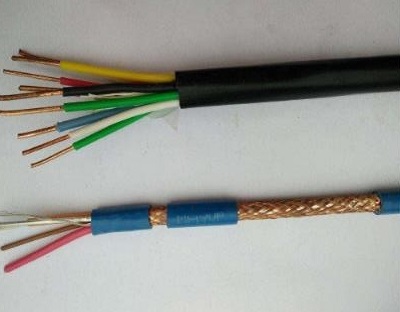
Armored cables use steel tape or aluminum tape to strengthen the mechanical properties of the cable so that the cable can withstand external mechanical pressure. The shielded cable is shielded with copper tape or braided copper wire to isolate electromagnetic field interference.
Metal-clad cable and armor cables are among the most confusing cables on the market. The reason is that in terms of construction, these cables are more or less similar and both have armor. The main difference between the two cables is actually related to grounding, not armor. Before focusing on this tiny difference, let’s dive into the role of armor in armored cables.
The Function of Cable Armor

The armor is made of metal in the armored cable, such as steel, copper, or aluminum. The purpose of the armor is to provide physical protection of the cable from the environment. It mainly protects the power cord from physical damage. Therefore, armored wires are only used in environments where mechanical damage may occur.
Budget-wise, the main advantage of DC and AC cables over general-purpose cables without armor is the savings in conduit costs. Since the armor provides the protection that conduits would have provided, you don’t need to spend extra money on it.
While there is a certain level of misinformation on the subject online, armored cables do not protect cables from weather, chemicals, and water. In fact, armored wires are susceptible to corrosion. If you want to use an armored cable in wet locations, you will need a cable with an extra PVC jacket, specially installed for wet locations.
Difference Between DC Cable and Armored Cable
The main difference between AC and DC wires is that metal-clad cables have a standard ground wire, while AC cables rely on a jacket combined with a wire or strip to ensure grounding. Metal armor can also be used with bond wires as part of the earth’s ground. In DC-type cables, the armor is not part of the ground.
Another difference between DC and AC cables is that AC cables are used indoors and are not suitable for wet and humid places. The reason is that the AC cable does not have a PVC jacket. It is a PVC jacket that makes the DC cable suitable for outdoor locations. Unlike DC, AC cables are not suitable for direct burial.
Long before the introduction of DC, AC cables were the predominant type of armored cable on the market. They appeared in the National Electrical Code NEC as early as 1903. Today, however, DC cables are a more versatile and modern alternative.
If you need armored cables indoors, AC cables can meet your needs. At VERI Cable, you can get all types of AC and DC cables of unprecedented quality at the best prices in the industry.